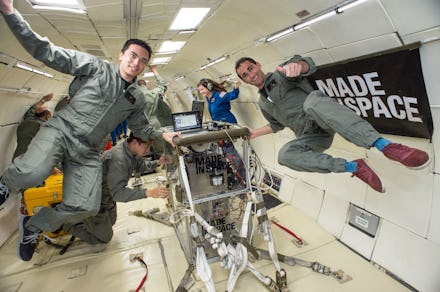How 3-D Printing Could Power Our First Colony in Space

Congratulations, humanity: We may have just found the answer to colonizing space.
Made in Space, the same company that sent a zero-gravity printer to the International Space Station last year, now made its printer able to print in a vacuum (like outer space) using a specially designed printer head.
"We believe we are as little as 18 months away from incorporating the current designs into on-orbit tests," Mike Snyder, chief engineer at Made in Space, told Factor. "These preliminary tests, combined with our experience with microgravity additive manufacturing, show that the direct manufacturing of structures in space is possible using Made in Space-developed technologies. ... Complete structural optimization is now possible in space."
One of the biggest problems with doing anything in space is what it costs to send anything up there. SpaceX, Elon Musk's private aerospace venture, made massive strides a few years ago when he said he could ship matter into space the cheapest — at $1,000 a pound.
If astronauts can just print materials themselves, like on the surface of Mars, they can print the building blocks of necessary habitats: panels that can snap together to form walls and enclosures, different mechanical tools, even the parts to build gardens for growing food in space.
For this to really be the big push for colonizing a planet or asteroid, Made in Space, or any of its partners, will need to analyze samples from the planet's surface and be able to turn them into building materials for the printer. That way, when researchers get one of the printers down on the ground, they'll be able to just run naturally occurring minerals through the printer to get anything from walls to cooking utensils.
We already know scientists can use minerals like sand instead of plastic to print. Made in Space, NASA and space-faring future generations could soon be building specially designed structures to begin what's been on our minds for decades: the colonization of Mars.